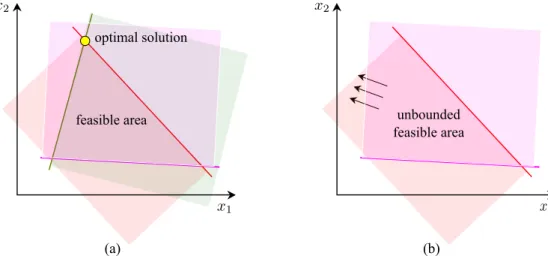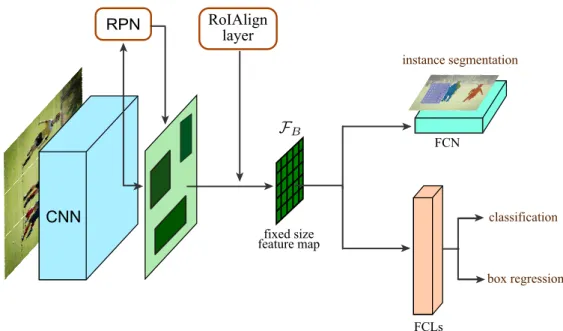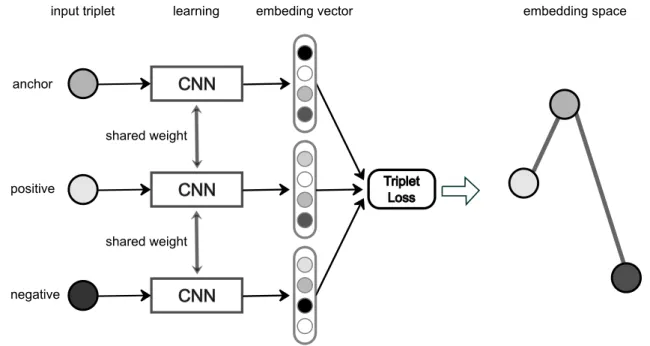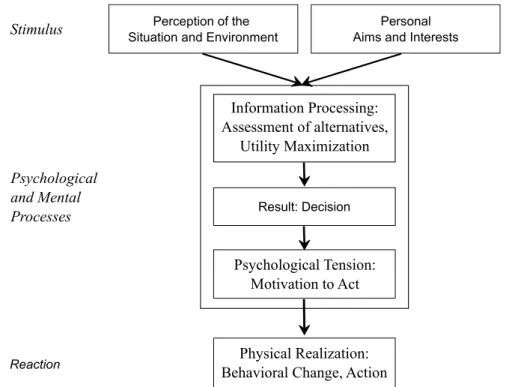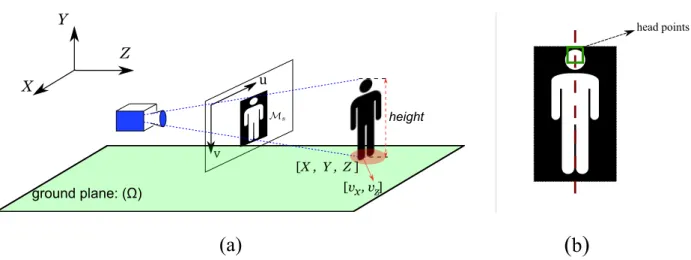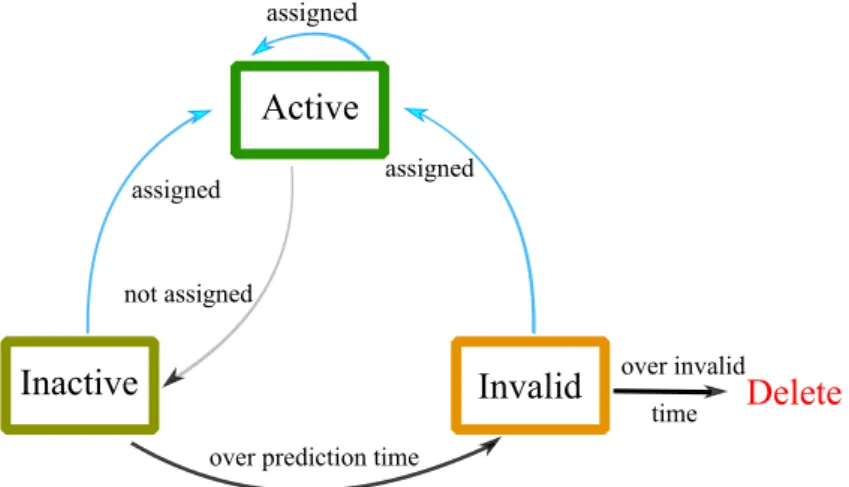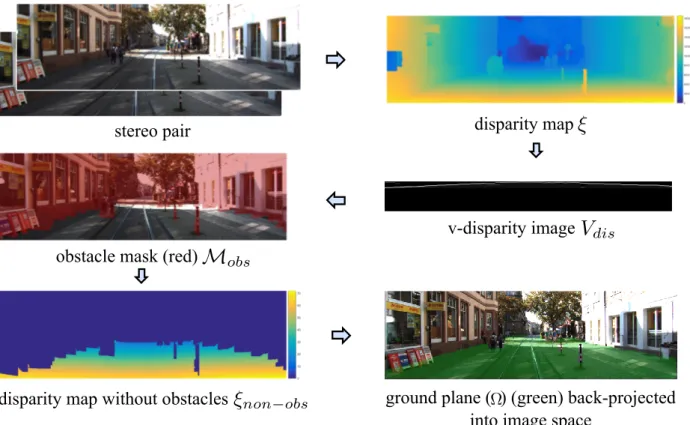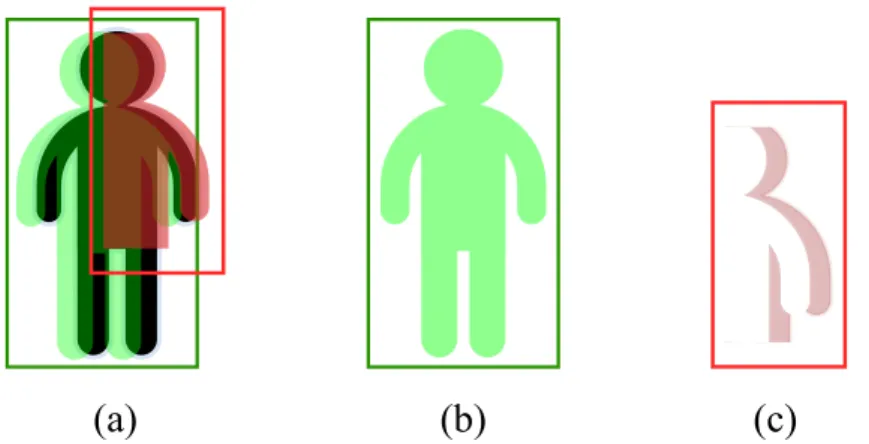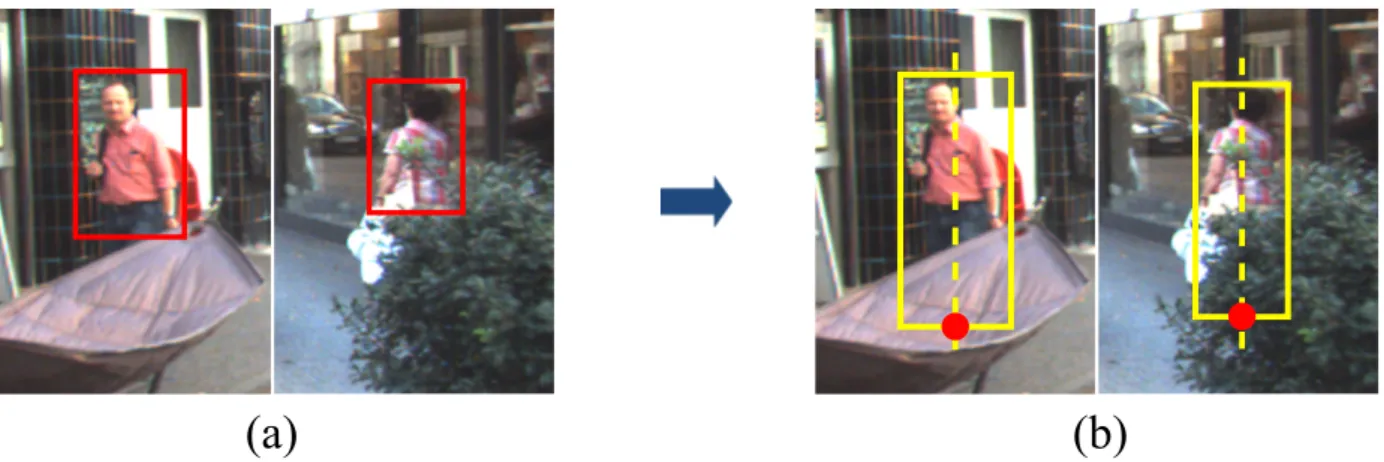Veröffentlichungen der DGK
Ausschuss Geodäsie der Bayerischen Akademie der Wissenschaften
Reihe C Dissertationen Heft Nr. 854
Uyen Dao-Xuan Nguyen
3D Pedestrian Tracking Using Neighbourhood Constraints
München 2020
Verlag der Bayerischen Akademie der Wissenschaften
ISSN 0065-5325 ISBN 978-3-7696-5266-6
Diese Arbeit ist gleichzeitig veröffentlicht in:
Wissenschaftliche Arbeiten der Fachrichtung Geodäsie und Geoinformatik der Universität Hannover ISSN 0174-1454, Nr. 358, Hannover 2020
Veröffentlichungen der DGK
Ausschuss Geodäsie der Bayerischen Akademie der Wissenschaften
Reihe C Dissertationen Heft Nr. 854
3D Pedestrian Tracking Using Neighbourhood Constraints
Von der Fakultät für Bauingenieurwesen und Geodäsie der Gottfried Wilhelm Leibniz Universität Hannover
zur Erlangung des Grades Doktor-Ingenieur (Dr.-Ing.) genehmigte Dissertation
Vorgelegt von
Dipl.-Ing. Uyen Dao-Xuan Nguyen
Geboren am 08.12.1989 in Tien Giang, Vietnam
München 2020
Verlag der Bayerischen Akademie der Wissenschaften
ISSN 0065-5325 ISBN 978-3-7696-5266-6
Diese Arbeit ist gleichzeitig veröffentlicht in:
Wissenschaftliche Arbeiten der Fachrichtung Geodäsie und Geoinformatik der Universität Hannover ISSN 0174-1454, Nr. 358, Hannover 2020
Adresse der DGK:
Ausschuss Geodäsie der Bayerischen Akademie der Wissenschaften (DGK) Alfons-Goppel-Straße 11 ● D – 80539 München
Telefon +49 – 331 – 288 1685 ● Telefax +49 – 331 – 288 1759 E-Mail post@dgk.badw.de ● http://www.dgk.badw.de
Prüfungskommission:
Vorsitzender: Prof. Dr.-Ing. Franz Rottensteiner Referent: Prof. Dr.-Ing. habil. Christian Heipke Korreferenten: Prof. Dr.-Ing. habil. Monika Sester
Prof. Dr.-Ing. Michael Yang (Twente, Netherlands) Tag der mündlichen Prüfung: 29.05.2020
© 2020 Bayerische Akademie der Wissenschaften, München
Alle Rechte vorbehalten. Ohne Genehmigung der Herausgeber ist es auch nicht gestattet,
die Veröffentlichung oder Teile daraus auf photomechanischem Wege (Photokopie, Mikrokopie) zu vervielfältigen
ISSN 0065-5325 ISBN 978-3-7696-5266-6
i
Abstract
Tracking pedestrians based on visual sensors has many diverse applications, among them au- tonomous driving. Through tracking, not only the position of pedestrians but also their temporal movement can be obtained. This information helps vehicles and robots to sense their surrounding environment and thus they can plan appropriate reactions. In addition to obtaining a high recall, maintaining the consistency of tracked trajectories during data association is one of the most cru- cial issues of any tracker.
Following the tracking-by-detection paradigm, a new method called 3D-TLSR (3D pedestrian tracking using local structure refinement) is presented in this thesis aiming at improving the accu- racy, reliability, and consistency of tracked trajectories. The contributions of this work are four- fold. First, a framework combining both, 2D image and 3D object space information, to track multiple pedestrians in 3D object space is presented, in which tracking, detection, and prediction are all considered and improved to enhance tracking results in terms of completeness, correctness, and reliability. Second, a hierarchical association approach is introduced to improve the consis- tency of trajectories by utilising geometry cues, which is carried out in two steps: (1) targets whose assignments have a high probability of correctness are selected as anchors and (2) prior knowledge about the geometry changes of the anchors is used to correct unreliable assignments of detections with their nearby trajectories in 3D space. Additionally, the tracking-to-confirm-detection (TCD) approach is introduced to address low-quality detection results so that both, completeness and cor- rectness of trajectories, can be improved during tracking. Third, a simple approach to estimate and correct the velocity of a tracked person is proposed based on the relationship of moving targets, which allows missed detections to be better retrieved. Fourth, a new dataset called MuVi, consist- ing of image sequences of pedestrians from three different viewpoints with a large overlapping has been acquired, which can be employed for either single view or multi-view collaborative track- ing. The new dataset offers additional data for the community to promote research achievements theoretically and practically.
Experiments on different datasets are carried out to illustrate the advantages and weaknesses of the proposed tracking method and its individual component. Experimental results on the well known KITTI tracking benchmark, the ETHMS dataset, as well as a self-generated MuVi dataset show that the proposed tracker yields comparable results to other state-of-the-art methods and gives the best online result among all investigated approaches. On the ETHMS dataset, our approach obtains the best results with large margins for most tracking metrics. These findings confirm the effectiveness and generalization potential of the proposed tracking method.
Keywords 3D pedestrian tracking, tracking-confirm-detection, online association, linear pro- gramming, local structure constraints, missed detection recovery
iii
Zusammenfassung
Die auf visuellen Sensoren basierende Fußg¨angerverfolgung findet in vielen verschiedenen Bere- ichen Anwendung, einschließlich dem des autonomen Fahrens. Die Verfolgung liefert dabei nicht nur die Position der Fußg¨anger, sondern auch deren Bewegung ¨uber die Zeit. Diese Informa- tionen helfen Fahrzeugen und Robotern, ihre Umgebung zu erfassen und erm¨oglichen ihnen so, notwendige Reaktionen zu planen. Neben einer hohen Detektionsrate ist die Wahrung der Konsis- tenz nachverfolgter Trajektorien w¨ahrend der Datenzuordnung eines der Hauptprobleme f¨ur jede Methode zur Fußg¨angerverfolgung.
Dem Tracking-by-Detection-Paradigma folgend wird in dieser Arbeit unter dem Namen 3D- TLSR (3D-Fußg¨angerverfolgung mit lokaler Strukturverfeinerung) eine neue Methode vorgestellt, die darauf abzielt, Genauigkeit, Zuverl¨assigkeit und Konsistenz von nachverfolgten Trajektorien zu verbessern. Die vorliegende Arbeit beinhaltet daf¨ur vier verschiedene Beitr¨age. Zun¨achst wird ein Framework vorgeschlagen, das sowohl 2D-Bild- als auch 3D-Objektrauminformationen kom- biniert, um mehrere Fußg¨anger im 3D-Objektraum zu verfolgen. Dabei werden Verfolgung, Erken- nung und Vorhersage ber¨ucksichtigt und optimiert, um die Ergebnisse im Sinne von Vollst¨andigkeit, Korrektheit und Zuverl¨assigkeit zu verbessern. Zweitens wird ein Ansatz zur hierarchischen Zuord- nung eingef¨uhrt, um die Konsistenz von Trajektorien durch Verwendung von geometrischen Hin- weisen zu verbessern. Dies erfolgt in zwei Schritten: (1) Ziele, deren Zuordnungen mit hoher Wahrscheinlichkeit korrekt sind, werden als Anker ausgew¨ahlt und (2) Vorkenntnisse hinsichtlich geometrischer ¨Anderungen dieser Anker werden verwendet, um unzuverl¨assige Zuordnungen von Detektionen zu benachbarten Trajektorien im 3D-Raum zu korrigieren. Dar¨uber hinaus wird ein TCD-Ansatz (Tracking-to-Confirm-Detection) eingef¨uhrt, um dem Problem entgegenzuwirken, welches aus qualitativ schlechten Erkennungen resultiert. Damit kann sowohl die Vollst¨andigkeit als auch die Korrektheit der Trajektorien w¨ahrend der Verfolgung verbessert werden. Drittens wird ein einfacher Ansatz zur Sch¨atzung und Korrektur der Geschwindigkeit einer nachverfolgten Per- son vorgeschlagen, welcher auf der Beziehung zwischen bewegten Zielen basiert und fehlende De- tektionen ausgleicht. Viertens werden Bildsequenzen von Fußg¨angern aus drei verschiedenen Per- spektiven mit großem ¨Uberlappungsbereich erfasst und in Form des MuVi-Datensatzes vorgestellt.
Dieser neue Datensatz kann zur Nachverfolgung auf Basis einer einzelnen oder mehrerer ver- schiedener Perspektiven verwendet werden und soll die wissenschaftliche Gemeinschaft bei theo- retischer wie praktischer Forschung unterst¨utzen.
Durch Experimente auf unterschiedlichen Datens¨atzen werden die Vor- und Nachteile der vorges- chlagenen Methodik und ihrer einzelnen Komponenten veranschaulicht. Experimentelle Ergeb- nisse auf dem bekannten KITTI-Tracking-Benchmark, dem ETHMS-Datensatz, sowie auf dem selbst erstellten Datensatz MuVi zeigen, dass der vorgeschlagene Ansatz dem Stand der Technik entspricht und das beste Online-Ergebnis aller untersuchten Methoden liefert. Auf dem ETHMS-
iv
Datensatz erzielt f¨ur die meisten Tracking-Metriken mit großem Abstand die besten Ergebnisse.
Diese Resultate best¨atigen die Wirksamkeit und Allgemeing¨ultigkeit der vorgeschlagenen Methodik zur Fußg¨angerverfolgung.
Schl ¨usselw¨orter 3D-Fußg¨angerverfolgung, Nachverfolgung best¨atigt Erkennung, Online- Zuordnung, lineare Programmierung, lokale Strukturbeschr¨ankungen, Wiederherstellung fehlen- der Erkennungen
v
Symbols
General notations
Rn the n-dimensional Euclidean space
| | absolute value, number of elements in a set
|| ||L2 L2norm
σx standard deviation ofx Σxx covariance matrix of vectorx p(x) marginal probabilty ofx
p(x|y) conditional probabilty ofxgiveny
N normal distribution
µx mean value ofx
Eh.i expected value
element-wise multiplication
Localization
(Ω) ground plane
ξ disparity map
P foot position of a pedestrian in 3D object space I foot position of a pedestrian in image space
B bounding box of a detection
vi
% detection confidence value
u, v image coordinates
d disparity value
M binary mask
threshold value
H histogram
P edH, P edW average of pedestrian height and width
ζMs ratio between the number of pixels in an instance segmentation mask and its bounding box
ζB ratio between the height and width of a bounding box cu, cv image principle point coordinates
f camera focal length
Base base line of a stereo system
Z depth value calculated from 3D point cloud
ZH/W+ depth value predicted from height or width of a bounding box
Tracking
D set of detections
T set of trajectories
D detection
S state vector
S+ predicted state vector
S∗ updated state vector
ψ state transition matrix
τ trajectory
vii
A coefficient matrix
c indicator vector
ΓA appearance similarity
ΓG geometry similarity
W vector of association weight
wji association weight between detectioniand trajectoryj ρ, θ, ν weights of different terms in association weight
gate3D 3D association gate gate2D 2D association gate
L regression line
F measurement model
JA Jacobian matrix ofA
vX, vZ velocity inX andZ direction of a tracked target aX, aZ acceleration inX andZ direction of a tracked target
ix
Table of Contents
1 Introduction 1
1.1 Problem statement . . . . 2
1.2 Research objectives and contributions . . . . 3
1.3 Outline of the thesis . . . . 4
2 Basics 5 2.1 Linear programming . . . . 5
2.2 Mask R-CNN . . . 10
2.3 TriNet . . . 12
2.4 Social force model . . . 13
2.5 Kalman filter . . . 16
3 Related Works 19 3.1 Tracking approaches . . . 19
3.2 Object detection . . . 23
3.3 Tracking-based-detection . . . 25
3.4 Motion model . . . 31
3.5 Discussion . . . 32
4 Multi-pedestrian Tracking in 3D Object Space 37 4.1 Problem statement and the general pipeline . . . 37
4.2 Detection and localization . . . 40
4.2.1 Scene modelling . . . 40
4.2.2 Observations . . . 42
4.3 Hierarchical data association . . . 46
4.3.1 Anchor determination . . . 47
4.3.2 Local structure refinement . . . 51
4.4 Motion correction and position prediction . . . 53
4.4.1 Velocity calculation and correction . . . 54
4.4.2 Missed detections retrieval . . . 55
4.5 Filtering . . . 56
x Table of Contents
4.6 Discussion . . . 58
4.6.1 Probabilistic pedestrian tracking . . . 58
4.6.2 Assumptions . . . 60
5 Experiments and Results 61 5.1 Data and evaluation metrics . . . 61
5.1.1 Data . . . 61
5.1.2 Evaluation metrics . . . 65
5.2 Component optimization . . . 66
5.2.1 Detection and post-processing . . . 67
5.2.2 Data association . . . 68
5.2.3 Missed detections recovery . . . 75
5.3 Component evaluation . . . 76
5.4 Localization accuracy in 3D object space . . . 82
5.5 Comparison with state-of-the-art trackers . . . 86
6 Discussion 93 6.1 Proposed components . . . 93
6.2 Performance of the proposed tracker . . . 95
7 Conclusion 97
Bibliography 99
1
1 Introduction
The human visual system is capable of capturing information about interesting objects like po- sition, type, and interaction, accurately within an extremely short time. In contrast, this task is highly challenging for computer vision systems. In such systems, cameras act as the eyes to cap- ture images and software algorithms take responsibility for analysing and providing necessary information for further applications. With the support of these systems, human effort in processing huge amounts of images, which is expensive and less stable in the long run, can be reduced or completely avoided. Despite constant development and progress in the fields of photogrammetry and computer vision, the performance of a computer system still cannot reach the human ability.
One of the problems is the perception of motion at the object-level over time (Rasouli et al., 2019;
Huang et al., 2019).
Derived from the development of applications related to autonomous driving, traffic safety, robotics, etc., pedestrians are one of the most momentous objects to be tracked. Today, with advanced technologies of computational vision systems in terms of both hardware and software, pedestrians, in principle, can be localized and tracked automatically in image sequences with or without prior information about the captured scenes. Tracking allows vehicles and robots not only to know where pedestrians probably appear in the scene but also to anticipate their mov- ing directions and behaviours, which are crucial factors for planning their moving paths and safe navigation (Rasouli and Tsotsos, 2019). Though a substantial amount of studies have been car- ried out to tackle the problem, tracking pedestrians correctly and robustly still requires extensive improvements to deal with difficulties coming from various sources. First, pedestrians cannot be considered as rigid bodies, they constantly carry out flexible and articulated movements. Second, the surrounding illumination conditions and the visible complicated background change over time.
These factors result in incomplete, incorrect, and noisy detections as well as significant changes of pedestrians’ appearance. Moreover, when pedestrians appear in crowds, their projections in images can be occluded by the others. This also poses problems to assign a pedestrian detection to its corresponding detections in other image frames. All the aforementioned challenges usually lead to two main problems in tracking: missed detections and identity switches. Last but not least, though accurate and reliable 3D geometry trajectories are required by many real-world applica- tions, most of the existing literature is targeted at improving the completeness and consistency of 2D trajectories. In summary, applying detection and tracking results to practical applications
2 1.1. Problem statement requires significant quality of generated trajectories, which is still far from what has been accom- plished (Leal-Taix´e et al., 2017). Motivated by these challenges, this thesis deals with tracking pedestrians in 3D object space with high reliability and accuracy using stereo images.
Besides the development of novel and advantageous algorithms, the provision of public datasets also contributes to significantly promote research achievements theoretically and practically. Data sets are means to evaluate the accuracy, robustness, as well as the generalization potential of ap- proaches, which allows the strong and weak points of a suggested method to be thoroughly anal- ysed. Thus, current difficulties and challenges can be emphasized and untangled by the research community. Encouraged by this fact, a 3D pedestrian tracking dataset named multi-views (MuVi) was created within the scope of this thesis, in which stereo cameras are utilised to acquire the movements of pedestrians. Furthermore, to enable collaborative tracking by fusing information from multiple camera systems, the scenes were captured from three different viewpoints of a junc- tion. To the best of our knowledge, at the time of writing (18-Feb-2020), no similar dataset is publicly available.
1.1 Problem statement
Tracking-by-detection is a well-known and widely used remedy in the state-of-the-art tracking literature (Xu et al., 2019), in which the tracking task is decomposed into two separate stages:
detection and data association. Most of the studies following this approach concentrate on con- catenating detections across image frames to form consistent trajectories for interesting objects.
The data association task can become extremely complicated in crowded groups, especially when the tracking is carried out in the 2D image domain, which suffers the problem of dimensionality reduction. Moreover, for autonomous driving applications, the 3D position is essential informa- tion for a vehicle to plan its path. Hence, tracking in the image domain is neither sufficient nor effective.
In this study, the problem of pedestrian tracking is investigated using stereo images acquired from moving cameras in a probabilistic manner. The ultimate aim is to obtain correct 3D tra- jectories with high localization accuracy and completeness by combining both 2D image and 3D stereoscopic information. The state of a target at each epoch is accompanied by its uncertainty, which accounts for the precision of the estimated trajectory in terms of localization. This un- certainty information is vital for real-world applications in making decisions and responding to events. The difficulties of tracking are exposed both in the detection and the association stage. In a detector result, together with an increase in recall also the number of false positives (FPs) rises up.
Consequently, choosing only observations with a high probability of correctness results in losing true positives (TPs). In contrast, taking into account also incorrect detections as input for tracking
1.2. Research objectives and contributions 3 causes more complexity and difficulty for the association. Due to problems such as erroneous input results and ambiguities in appearance or position, the association can easily fail under non-optimal conditions. Last but not least, the behaviour of pedestrians is sometimes unpredictable, which makes modelling their motion difficult, especially when important information is neglected such as undetected nearby pedestrians.
Based on specific characteristics of pedestrians such as size and moving behaviour, a number of filters are developed to eliminate wrong detections, which help to increase the accuracy of track- ing results and to reduce the complications due to incorrect and incomplete inputs for the later stages. In order to maintain accurate identities for tracked trajectories, local geometry constraints among pedestrians in groups are employed to enhance association results. This idea has been explored using 2D image information (Yoon et al., 2016), yet it cannot help to completely under- stand the real-world geometry in 3D space. Therefore, in this work, 3D point clouds obtained from stereoscopic images are employed to model the relationship among pedestrians, which enables the inference of geometry constrains between them both, in 2D image and 3D object space. Combin- ing those constraints with appearance cues, the accuracy of association and tracking tasks can be improved. To this end, the motion of a person is modelled by taking advantage of the relationship between pedestrians. In this approach, the moving direction and speed of a tracked pedestrian can be corrected and updated according to his/her friends. With a correct motion model, missed detections of a target can be recovered so that not only the recall value is improved but also the fragmentation of tracked trajectories is reduced.
1.2 Research objectives and contributions
The primary goal of this study is to develop an online tracker that can accurately and robustly localize and track multiple pedestrians on the street level in 3D object space using stereo images, and which yields results at least on par with the scientific state-of-the-art. For this purpose, several crucial issues of tracking including improving the recall of tracked people, enhancing the accuracy and reliability of generated trajectories are endeavoured and developed.
To achieve these research objectives, several contributions have been made in this thesis:
• A multi-person tracking framework is introduced to track pedestrians in world coordinates by employing both, 2D images and 3D stereoscopic information. Using stereo images, meth- ods are proposed to model the scene and estimate pedestrian positions in 3D object space.
The appearance of pedestrians in image space is utilised for detection and spatio-temporal features comparison.
• A hierarchical association approach to improve the re-identification accuracy of tracked tar-
4 1.3. Outline of the thesis gets by employing relationships in 3D space among nearby pedestrians, which is divided into two steps: (1) determining trajectories whose assignments are strongly believed to be correct, which are called anchors and (2) using local geometry constraints between the an- chors and their nearby trajectories in 3D space to correct unreliable assignments in the first step. Additionally, the tracking-confirm-detection (TCD) approach is suggested to cope with the problem of low quality detection results so that high recall and small false alarm values of detections during tracking can be obtained.
• A method to reliably estimate and assess the motion of pedestrians is explored. In addition, a so-called friend relationship to correct pedestrian velocity and improve trajectory prediction is defined, which endorses the interpretation of the motion model for tracked pedestrians.
Consequently, detections missed by the detector can be retrieved through the prediction step.
• A dataset containing image sequences of pedestrians from three different stereo rigs with a large overlapping area is created. This dataset, therefore, can be used to carry out experi- ments either for mono view tracking or for collaboration and fusion of images in multi-view tracking.
1.3 Outline of the thesis
The rest of this thesis is arranged as follows. Following this introduction is the presentation of fundamental theories for the thesis in Chapter 2. Existing literature related to this work is reviewed in Chapter 3, covering four primary aspects of the tracking problem, namely general tracking ap- proaches, object detection methods, tracking-by-detection, and motion modelling. The details of the proposed tracker are given in Chapter 4. Particularly, Section 4.1 presents the general pipeline of the developed tracking approach and defines the relationship between pedestrians and the transi- tion state of a trajectory, followed by the explanation of the detection and post-processing methods in Section 4.2. The association optimization and its involved cues are illustrated in Section 4.3.
Section 4.4 describes in detail the suggested velocity estimation and missed detection prediction methods. Section 4.5 provides an implementation of an extended Kalman filter to smooth trajec- tories. Extensive experimental results are reported in Chapter 5. This chapter focuses on analysing three subjects, consisting of component optimization, method evaluation, and performance of the tracking approach compared to state-of-the-art methods. These results and their implications are discussed in Chapter 6. Finally, this thesis is concluded by an outlook for future works in Chap- ter 6.
5
2 Basics
This chapter presents fundamental theories and methods which are utilized to develop the tracking approach in this dissertation. The basic formulation and solution of linear programming, which is commonly used in data association optimization is described in Section 2.1. The architecture of the mask R-CNN detector which is employed to detect pedestrians in images, is presented in Section 2.2, followed by the description of TriNet in Section 2.3 which is exploited as a feature extractor for pedestrian appearance. Section 2.4 provides the theory of the social force model. On the ground of this, various motion models are designed to predict behaviours of pedestrians while they are moving. Finally, the fundamentals of Kalman filtering are presented in Section 2.5. This filter is often used in an object tracking approach to smooth the resulting trajectories.
2.1 Linear programming
The term linear programming (LP) can be traced back to the late 1940s and was first introduced by Dantzig (1998). Until now, this set of algorithms has been widely adopted to optimize (finding the maximum or minimum) a linear function subject to a set of constraints which can be either lin- ear equalities or inequalities. Following (Bazaraa et al., 2011), a basic formulation of this problem can be depicted as follows:
Minimize: c1x1+c2x2+...+cnxn (2.1.1)
Subject to: a11x1+a12x2+...+a1nxn≥b1 a21x1+a22x2+...+a2nxn≥b2
· · ·
am1x1+am2x2 +...+amnxn ≥bm xi ≥0 i= 1, . . . , n
, (2.1.2)
in which the row vectorc= [c1, c2, ..., cn]T ∈Rnis thecost coefficient vectorandx= [x1, x2, ..., xn]∈ Rn is decision vector. x needs to be optimized to minimize the objective function in Equa-
6 2.1. Linear programming
unbounded feasible area feasible area
optimal solution
(a) (b)
Figure 2.1: An example illustration of bounded (a) and unbounded (b) feasible area in 2- dimensional space, adapted from (Leal-Taix´e, 2014).
tion (2.1.1) and satisfy constraints in Equation (2.1.2).A∈Rmnis theconstraint matrix:
A=
a11 a12 . . . a1n a21 a22 . . . a2n ... ... . .. ... am1 am2 . . . amn
and b = [b1, b2, ..., bm] is the right-hand-side vector. Each inequality constraintai1x1 +ai2x2 + ...+ainxn ≥bi is a half space inRn.
The linear programming can be expressed in short form as:
min {cx:x∈Rn, Ax≥b xi ≥0 i= 1, . . . , n} (2.1.3) A solution xˆ ∈ Rncomplying with the condition Aˆx ≥ bis called feasible solution. A problem is feasibleif there is at least onefeasible solution existing for it, otherwise, it is infeasible. The feasible regionof an LP problem is formed by all feasible points and is a convex polytope as it is the intersection of half-spaces. If this region is finite and bounded, the problem is calledbounded.
A feasible x∗ ∈ Rn is optimal if cx∗ < cˆx for all existing feasible solutionsxˆ ∈ Rn. It has been proven that if an LP isfeasibleandbounded, itsoptimal solutionis one of the vertices of the feasible area(Bazaraa et al., 2011).
An inequality can be easily converted into an equality equation by simply adding non-negative surplus or slack variables. For instance, the constraintPn
j=1aijxj ≥biis equivalent toPn
j=1aijxj− xn+1 =biwithxn+1 ≥0. An LP is said to be instandardfrom if all constraints are equalities and all variables are non-negative. On the other hand, if all restrictions are constructed by inequality equations, the LP hascanonicalform. By transforming inequalities into equations, an LP problem can be converted fromcanonicaltostandardand vice versa.
2.1. Linear programming 7
optimal solution
starting vertex
Figure 2.2: A visual exemplar of the simplex method, adapted from (Leal-Taix´e, 2014).
Simplex method
Although it is known that the optimal solution of an LP problem lies on one of its feasible area vertices, exhaustively checking all of them is not an efficient way because usually the number of vertices in an LP problem is very large. In practice, the simplex method which was described in (Bazaraa et al., 2011) is extensively applied to solve this problem in standard form. The algo- rithm first starts with a vertex of the feasible region and moves along edges to another vertex until it reaches the optimal solution. The current solution only moves to one of its adjacent vertices if this makes the objective function improve its value so that the problem can converge. The two pri- mary aspects which need to be inspected in this algorithm are how to evaluate whether a solution is optimal or not without checking the objective function value of other vertices and how to move to a better vertex so that the optimal solution can be obtained.
Consider an LP in standard form:
min {cx:x∈Rn, Ax=b xi ≥0 i= 1, . . . , n}
Suppose that rank(A, b) = rank(A) = m, B is an m × m invertible matrix, and N is an m×(n−m)matrix such thatA= [B, N].
Then,x = xxB
N
, in whichxB =B−1b = ¯b ,xN = 0and satisfies the equationAx =bis called abasic solutionof the LP. The componentxBcontainsbasic variablesandxN includesnon-basic variables.
IfB−1b≥0, thenxis abasic feasible solution. The objective valuezatxcan be rewritten as:
z =cx
= (cB cN) xB
xN
=cBxB+cNxN
=cBB−1b
(2.1.4)
8 2.1. Linear programming It can be proven that the collection of basic feasible solutions are equivalent to a set of extreme points (i.e. vertices of a feasible area) (Dantzig, 1998) and the procedure of finding the optimal solution with an initial basic solutionx= xxB
N
is carried out as follows:
1. Let:
zk−ck= max
j∈J (zj−cj) zj =cBB−1aj
, (2.1.5)
in whichj is an index of thenon-basicvariables inxN whose|xN|=J. aj is the columnj of matrix A. If(zk−ck) ≤ 0, the currentbasic feasible solution xis theoptimal solution.
Otherwise,xkis called theentering variableand the operation continues with step 2.
2. Ifyk =B−1ak≤0, it is concluded that the optimal solution is unbounded.
3. ris the index of theblocking variablexBr based on the minimum ratio test:
¯br
yrk = min
1≤i≤m{¯bi
yik :yik >0}, (2.1.6)
B is updated asaBr is replaced byak. Then repeat step 1.
In the worst case, the complexity of the simplex method can be exponential (Klee and Minty, 1972). Nevertheless, the simplex method often performs extremely well in practice. It is observed to usually converge within a number of iterations which linearly increases with the input dimen- sions. In other words, the simplex method has polynomial-time average-case complexity under various probability distributions. Moreover, the running time of this algorithm is assured to be sub-exponentialO(mn2+eO
√nlogn)once some randomized pivot rules are applied (Matouˇsek et al., 1996).
Integer programming
In many practical applications, fractional solutions are not reasonable and acceptable. Thus, another variance of LP called integer programming (IP) are employed to optimize solely integer solutionsx. A IP has similar form to an LP as follows:
minimize cx subject to Ax≥b,
x≥0, with x∈Zn.
(2.1.7)
The computational complexity of IP is NP-hard and thus much higher than LP. While the simplex method can effectively solve LPs, it is not suitable for IP problems. Simply rounding the solution obtained by the simplex method may even not be a feasible of an IP (see Figure 2.3). Nevertheless, the solutions of an LP and its IP are observed to be highly correlated:
2.1. Linear programming 9
Figure 2.3: An example illustration of the optimal solutions x∗ and x¯∗ for an LP and the corre- sponding IP.
• The optimum objective value Z∗ of an LP is the lower or upper bound for the objective of its corresponding IP, depending on whether the objective function is to be minimized or maximized.
• If an LP is feasible, so is its IP.
Several techniques have been proposed to solve the IP utilizing the above observations, two well- known approaches are branch-and-bound and cutting plane (Wolsey and Nemhauser, 1999). In the branch-and-bound method, the algorithm of finding an optimal solution is carried out in following steps:
• Find the solution for the corresponding LP using simplex method.
• Select a variablexi that has fractional valuex∗i and divide the current problem into two sub- problems by adding one of the two constraints: xi < x∗i andxi > x∗i to the original problem.
This procedure is called branching.
• Repeat step (1) and (2) for the sub-problems until either a branch is infeasible or an integer solution is obtained.
The branching routine is finished after a finite number of steps, yet requires a lot of computational effort. To reduce the number of branches, either the upper bound or lower bound Z∗ can be used to terminate a branch if its objective value does not satisfy the bounding condition.
The cutting plane method literally adds additional constraints (i.e. cuts) into an LP to eliminate non-integer solutions in the feasible area. The cuttings are repeated until the optimal solution of the LP is integer. There are a number of algorithms for finding cuts, the one introduced by Gomory (Gomory, 1958) is one of the most common and prominent ones.
10 2.2. Mask R-CNN
CNN
RPN
classification
box regression instance segmentation
fixed size feature map
FCLs FCN RoIAlign
layer
Figure 2.4: General network architecture of Mask R-CNN, adapted from (He et al., 2017).
In practice, the branch-and-bound algorithm usually works better than the cutting plane algo- rithm and converges fast. Nevertheless, in the worst case, the effort for convergence can grow exponentially with the problem size. Both, the branch-and-bound and the cutting plane methods are guaranteed to converge with in a number of finite steps.
2.2 Mask R-CNN
Mask R-CNN is a neural network introduced in (He et al., 2017) to simultaneously solve both, object detection and instance segmentation. The general architecture of this network is depicted in Figure 2.4. Mask R-CNN is trained in an end-to-end manner and has three main branches: region proposal, object classification and bounding box (BB) regression, and instance mask segmentation.
The region proposal network searches for all possible regions, i.e. a set of rectangles, in an image that can contain objects. First, a feature map of the whole input image is calculated using the convolution and pooling layers. At each position in the feature map, a sliding window is used to obtainnproposal BBs with different size and height-to-width ratio. Each BB has a score representing how likely it contains an object. For each proposal box, a fixed size feature mapFBis extracted employing the RoIAlign layer (see below). After obtaining theFB, mask R-CNN carries out three tasks at once as follows:
• The FB is fed into a sequence of fully connected layers that are divided into two sibling output layers: one delivers a classification in term of discrete probability distribution%over
2.2. Mask R-CNN 11 (k+ 1) object types including the background; the other layer outputs four BB coordinate offsets for each class (box regression in Figure 2.4).
• Another branch employs a fully convolutional networks (Long et al., 2015) to produce k instance binary masksm×m, one for each proposal region. Then, the mask that matches with the predicted object type is scaled up to the region of interest (RoI) size. Since the instance mask needs a precise spatial layout to map between the feature map and the RoI in the original image, a RoIAlign layer is developed to preserve the explicit per-pixel spatial correspondence during the mask generation step.
During training, a multi-task loss is computed to train the whole network end-to-end:
L=Lcls+Lbox+Lmask , (2.2.1)
where Lcls is the classification loss, Lbox is the bounding box loss, andLmask is the loss for the instance segmentation mask, which are computed as follows:
Lcls =−log(pi), (2.2.2) pi is the classification probability for the ground truth (GT) classi (i.e. the detection confidence score%) which is derived from the soft-max classification function.
Lbox(t, t∗) =X
i
(p∗i) X
q∈{x,y,w,h}
smoothL1(tq−t∗q) tx = (x−xa)/wa, ty = (y−ya)/ha
tw =log(w/wa), th =log(h/ha) t∗x = (x∗−xa)/wa, t∗y = (y∗−ya)/ha
t∗w =log(w∗/wa), t∗h =log(h∗/ha)
, (2.2.3)
smoothL1(x) =
0.5x2 if|x|<1
|x| −0.5 , otherwise
(2.2.4) where{x, y, w, h}are the predicted BB coordinates and size which are returned by mask R-CNN for its proposal {xa, ya, wa, ha} and{x∗, y∗, w∗, h∗} is the GT. The term p∗i illustrates that only predicted BB corresponding to the correct object classiare considered.
Lmask =− 1 m2
m
X
i=0 m
X
j=0
Mijlog(M+ij) + (1− Mij)log(1− M+ij) (2.2.5) Mij is a binary value of pixel (i, j) in the instance GT mask M. The value of pixels in the predicted mask M+ range from 0.0 to 1.0. During the inference, M+ is binarized using the threshold of0.5
12 2.3. TriNet
2.3 TriNet
TriNet is introduced in (Hermans et al., 2017) to solve the problem of person re-identification (Re-Id) using a convolutional neural network (CNN) and triplet loss. For that purpose, the network is trained to learn an embedding functionfθto extract person visual properties. In the embedding space, images of the same person should be closer to each other than those from different persons.
Mathematically, if the picture of a person is represented as a data point inRF and its appearance features are embedded as a vector inRD, the functionfθ maps semantically similar data points in RF onto a metrically close point inRD. The functionfθis parameterized byθwhich are learned in the training phase of the CNN. The architecture of the TriNet and its exemplary results are shown in Figure 2.5.
Triplet Loss
CNN
CNN
CNN
shared weight
shared weight
input triplet learning embeding vector
anchor
positive
negative
embedding space
Figure 2.5: Overview of the TriNet architecture. The network takes three images as input, the positive has the same Id as the anchor, while the negative has different Id. The training strategy is that in embedding space, the distance between an anchor and its positive is smaller than the distance of the anchor and a negative by at least a marginm.
During training, TriNet takes three images as input, in which one is call anchor a, a positive imagepcontains the person of the same id with the one in the anchor, and a negativenis an image of another person. The feature vectoryof these three images is extracted through a shared weights CNN asyi =fθ(i). The weights of this network are updated using the triplet loss as following:
Ltri(θ) = X
a,p,n,ya=yp6=yn
max(m+Da,p−Da,n,0)
= X
a,p,n,ya=yp6=yn
[m+Da,p−Da,n]+
, (2.3.1)
2.4. Social force model 13 [.]+is a standard hinge function. Di,j is the distance metric betweenyi andyj. Da,pandDa,n are called pull and push term, respectively. And for a given training triplet a, p, n, the loss function Ltri(θ)is constructed to achieve at a situation whereDa,pis smaller thanDa,nby at least a margin m.
However, calculating the loss using pull and push term of all training samples not only time- consuming but also makes the network fail at non-trivial triplets. Therefore, moderate negative and positive data mining techniques are applied to help the network better generalize. The core idea is that batches are randomly sampled fromP person identities. Each batch hasP K samples, in which K images comes from each person. Then, for each anchor a in the batch, its hardest negativenhand positivephare mined in the batch so thatDa,phhas the biggest distance andDa,nh
has the smallest. The loss function is modified to take the mining data strategy into account as follow:
LBH(θ;X) =
P
X
i=1 K
X
a=1
[m+ max
p=1...KD(fθ(xia), fθ(xip))− min
n=1...K j=1...P j6=i
D(fθ(xia), fθ(xjn))]+ (2.3.2)
There are also different methods to sample the hardest negative and positive samples in a batch depending on training strategies, which can lead to different performance of the network.
2.4 Social force model
The social force model (SFM) is suggested by Helbing and Molnar (1995) to explain the motion changes of pedestrians subject to social forces in most of situations and populations except com- plex scenarios. These models provide valuable clues to predict the walking trajectory of pedestri- ans so that vehicles and robots can plan their appropriate interactions in time. The force terms are reflected through intentions of people when they move including: a pedestrian planning to reach a desired place within a certain time on the most convenient path; a pedestrian always trying to keep a certain distance from other people and obstacle objects on streets like facades, traffic lights, vehi- cles; the attraction which can come from known persons or interesting events on streets. According to these terms, the process of behaviour changes depends on personal aims and perceptions about the surrounding environment of a person, which is depicted in Figure 2.6.
While the term force can be related as physical exertion on the pedestrian’s body, the SFM describes the reactions of pedestrians in responding to their perception of the surrounding environ- ment using quantity mathematics models.
Personal aims
A pedestrianαusually tries to reach a defined place~rαas conveniently as possible by choosing
